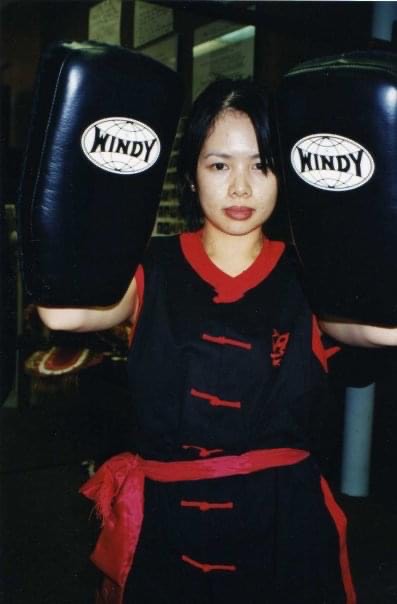Wing Chun vs Boxing: Comparing Striking Techniques and Training Methods
By Maurice Novoa a master under the Yuen Kay Shan, Ip Man and Pan Nam lineages.
Introduction:
Wing Chun and Boxing are two popular martial arts disciplines known for their striking techniques and training methods. While they have their unique characteristics, they share a common focus on punching techniques.
In this article, we will compare and contrast these two styles, examining their striking techniques, training methods, and practical applications in self-defense.
I. Striking Techniques
a. Wing Chun:
Wing Chun is a Chinese martial art that emphasizes close-range combat and efficiency of movement. One of its defining features is the use of short, straight punches aimed at the opponent’s centerline. The style focuses on delivering fast and direct strikes to vital targets such as the chin, throat, and groin.
Wing Chun practitioners are trained to maintain a strong defensive structure while executing precise strikes. The art also utilizes concepts like centerline theory and simultaneous attack and defense, allowing practitioners to engage and neutralize opponents quickly.
b. Boxing:
Boxing, also known as the “Sweet Science,” is a combat sport that primarily focuses on punches. It is characterized by a wide range of punching techniques, including jabs, crosses, hooks, and uppercuts. Boxers learn to generate power through body rotation and weight transfer, aiming to strike with force and accuracy.
The style also emphasizes footwork and head movement to evade incoming strikes. Defensive maneuvers such as slips, ducks, and weaving are taught to effectively avoid punches while maintaining balance and positioning.
II. Training Methods
a. Wing Chun:
Wing Chun training includes forms practice, which involves performing a series of predetermined movements to develop muscle memory and technique. These forms, such as the Siu Nim Tao, Chum Kiu, and Biu Jee, are designed to enhance structure, positioning, and flow. The repetition of forms allows practitioners to internalize the principles of Wing Chun and develop the ability to apply techniques spontaneously.
Additionally, Wing Chun utilizes partner drills such as Chi Sao (sticky hands) to improve sensitivity, reflexes, and close-quarters combat skills. Chi Sao develops the practitioner’s ability to read and react to their opponent’s movements, fostering a high level of sensitivity and adaptability.
The style also incorporates wooden dummy training, pad work, and sparring to refine techniques and test skills in controlled environments. These training methods focus on developing proper technique, speed, timing, and accuracy.
b. Boxing:
Boxing training is highly structured and aims to develop physical fitness, technical proficiency, and tactical awareness. The training typically begins with shadow boxing, where boxers practice their techniques and footwork without a partner. Bag work follows, allowing boxers to practice various combinations and refine striking mechanics. Pad work helps improve timing, accuracy, and agility, as practitioners work with a training partner holding focus mitts or pads.
Sparring sessions, under controlled conditions, provide opportunities to apply techniques in a realistic setting while practicing defensive maneuvers and strategy. Boxing training also involves conditioning exercises to build physical endurance and cardiovascular fitness, contributing to overall athleticism.
III. Practical Application in Self-Defense
a. Wing Chun:
Wing Chun’s close-quarters combat techniques and emphasis on simultaneous attack and defense make it effective for self-defense situations. The style’s focus on maintaining a strong defensive structure and delivering fast, direct strikes is valuable in close-range encounters.
Wing Chun practitioners learn to efficiently defend against strikes, grapples, and grabs, utilizing techniques like blocks, strikes, and joint manipulation. The ability to redirect and control an opponent’s energy is a key aspect of Wing Chun’s self-defense applications. Furthermore, Wing Chun’s sensitivity training and awareness of multiple attackers enhance its practicality in real-life scenarios.
b. Boxing:
Boxing’s emphasis on punching combinations, footwork, and head movement can also be effective in self-defense situations. Boxers learn to generate power and accuracy in their strikes, enabling them to deliver powerful blows to vulnerable areas.
Additionally, the footwork and defensive maneuvers taught in Boxing help practitioners evade and counter incoming attacks, minimizing the impact of strikes. Boxers develop the ability to maintain distance, read an opponent’s movements, and capitalize on openings.
However, it’s important to note that Boxing’s self-defense effectiveness relies heavily on maintaining a stand-up position, making it less suitable for situations that involve grappling or ground fighting.
Conclusion:
Both Wing Chun and Boxing offer valuable skills in striking and self-defense. Wing Chun’s focus on close-quarters combat, precision, and simultaneous attack and defense make it suitable for close-range encounters and multiple attackers. The art’s emphasis on structure, sensitivity, and energy control provides practitioners with the ability to neutralize threats efficiently.
On the other hand, Boxing’s wide range of punching techniques, footwork, and defensive maneuvers make it an effective striking discipline that emphasizes agility and power. The combination of speed, accuracy, and tactical awareness makes Boxing a formidable self-defense option.
Ultimately, the choice between Wing Chun and Boxing depends on personal preference, goals, and individual strengths. Some individuals may prefer the traditional aspects and unique principles of Wing Chun, while others may be drawn to the dynamic and athletic nature of Boxing. Both disciplines contribute to a well-rounded skill set in striking and self-defense.
Integrating elements from both styles can enhance an individual’s overall striking proficiency, adaptability, and ability to respond effectively in different combat scenarios. Ultimately, the effectiveness of any martial art lies in the practitioner’s dedication to training, understanding of principles, and ability to apply techniques in real-world situations.

